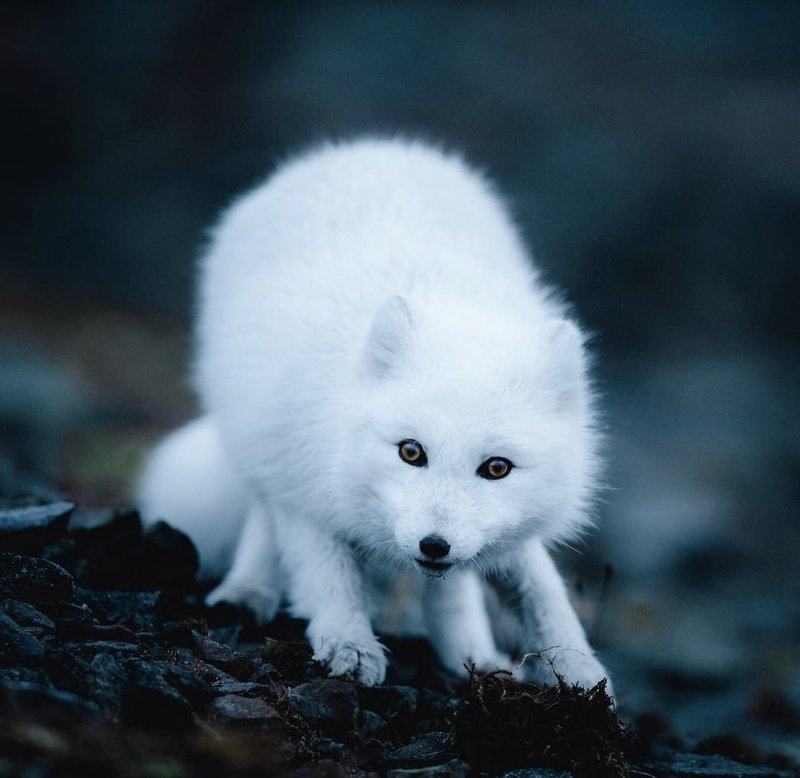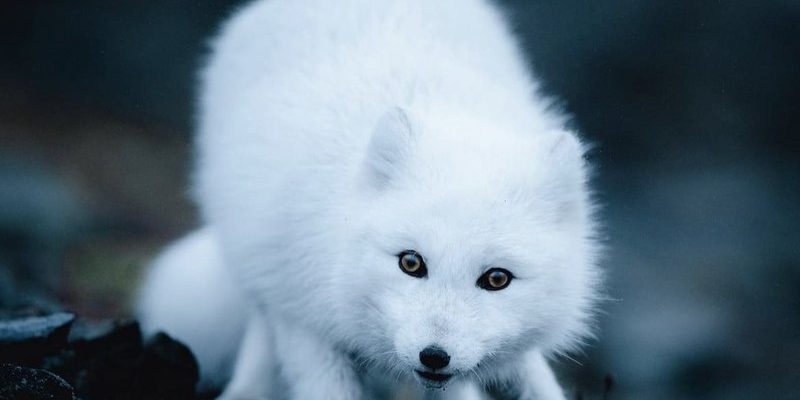
Let’s dig into these myths and reveal the truths about the Arctic fox. It’s time to set the record straight, make sense of these misconceptions, and appreciate this charming creature for what it really is. Grab your favorite drink, and let’s unravel the mystery together.
Myth 1: Arctic Foxes Are Always White
You might picture the Arctic fox as a pristine white creature that blends perfectly with the snowy landscape. While it’s true that they often have a white coat during the winter, that’s not the whole story. Here’s the thing—these foxes change their fur color with the seasons!
In summer, their fur transforms to a brown or gray hue, allowing them to camouflage against the tundra’s earthy tones. This seasonal change is essential for their survival. When hunting for small mammals like lemmings, they need to blend in to catch their unsuspecting prey. It’s like switching between formal and casual clothing based on the occasion. Understanding this helps you appreciate how adaptable and clever Arctic foxes really are.
How Do They Change Color?
The color change is controlled by the amount of daylight and temperature. During longer summer days, their bodies react by producing pigments that give them that characteristic brown or gray coat. Conversely, as the days shorten and temperatures drop, their bodies prepare for winter by shedding this summer coat and growing a thicker, white one. It’s nature’s way of helping them survive in their ever-changing environment.
Myth 2: Arctic Foxes Are Solitary Creatures
Many people think that Arctic foxes lead a solitary lifestyle, much like other fox species. But if you were to observe them closely, you’d find that Arctic foxes can actually be quite social. They form family units and live in small groups. These groups typically include a breeding pair and their young.
During the summer months, you might see young foxes playing together as they learn essential survival skills. They even help each other out when hunting! It’s a little like a neighborhood watch, where they keep an eye out for one another. This social behavior enhances their chances of survival in the wild, and it showcases their adaptability in harsh conditions.
What Do Family Units Look Like?
Within these family units, the adult foxes take turns caring for the pups. They work together to hunt for food and protect their territory. The pups, in turn, learn crucial skills by watching their parents and siblings. This teamwork is vital, especially during the colder months when food is scarce. It’s heartwarming to see how these families function together in such a challenging environment.
Myth 3: Arctic Foxes Are Predators Only
While Arctic foxes are indeed skilled hunters, this is a bit of a one-sided view of their diet. Honestly, they’re more like opportunistic eaters than pure predators. They eat whatever is available, which means their diet can include fruits, berries, and even insects in addition to small mammals.
This adaptability is key to their survival, especially during the long winter months when food can be hard to find. By varying their diet, Arctic foxes can make the most out of their environment. Think of them as the ultimate foodies of the Arctic, sampling whatever is on the menu!
What’s On Their Menu?
Their diet primarily consists of:
- Lemmings
- Hares
- Birds
- Fish
- Berries and plants
This diverse menu helps them thrive in the unforgiving Arctic landscape. It’s a great reminder of how flexible creatures can be when it comes to adapting to their surroundings.
Myth 4: Arctic Foxes Are Just Cute and Fluffy
Sure, Arctic foxes are adorable, but don’t let their fluffy appearance fool you. These foxes are incredibly resilient and resourceful animals. Surviving in temperatures that can drop to -50 degrees Fahrenheit (-45 degrees Celsius) requires more than just cuteness.
Their thick fur provides excellent insulation, and their small ears reduce heat loss. Plus, they have a layer of fat under their skin, helping them stay warm. It’s a classic case of “looks can be deceiving.” Beneath that furry exterior is a creature that has evolved to thrive in one of the harshest environments on Earth.
What Else Makes Them Tough?
Arctic foxes also have a great sense of hearing, which allows them to locate prey even when it’s buried under snow. They have been known to pounce on small mammals, diving headfirst into the snow. This hunting technique showcases their agility and determination, proving that they are more than just a pretty face.
Myth 5: Climate Change Isn’t Affecting Arctic Foxes
It might be easy to think that Arctic foxes are safe from the impacts of climate change since they’re so well adapted to their environment. However, let me explain—climate change is, in fact, taking a toll on these incredible animals.
As the Arctic warms, their habitat is changing. The melting of sea ice has a ripple effect, impacting the availability of prey and increasing competition with other species, like the red fox, which are moving northward. This competition can lead to a decline in Arctic fox populations, putting them at risk.
Why Should We Care?
Being aware of these challenges emphasizes the importance of protecting their habitat. The fate of the Arctic fox is tied to the health of the Arctic ecosystem as a whole. It’s a wake-up call for us all to advocate for climate action and conservation efforts to preserve wildlife and their home.
Now that we’ve tackled some common myths about the Arctic fox, it’s clear that these creatures are much more complex than they appear. From their changing coats to their social behavior and adaptable diets, the Arctic fox truly embodies resilience in a harsh environment.
By understanding the truth behind these myths, we can better appreciate their role in the ecosystem and the challenges they face due to climate change. Remember, the Arctic fox is more than just a cute face—it’s a symbol of adaptability and survival. So next time you come across this amazing creature, you’ll know just how special it really is.

